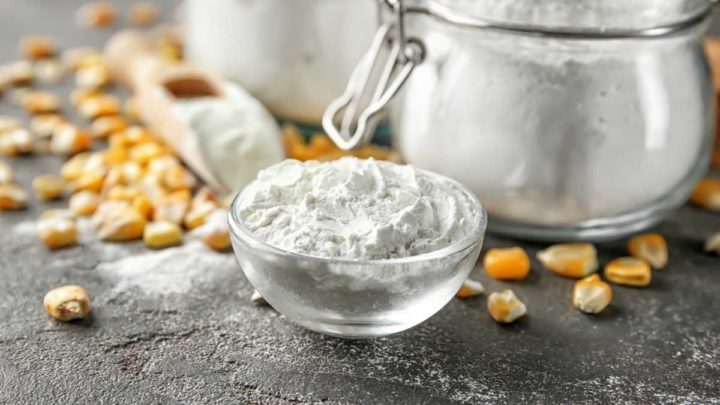What Does Cornstarch Taste Like
Cornstarch tastes similar to flour, which means is has a neutral taste. It is made of very finely ground corn kernal which have been dried, It is not sweet, nor is it bitter and does not have a corn taste.
It can be slightly salty depending on where you buy it from and how it was made. If you’ve ever used cornstarch before, then you know that it doesn’t have much of an aroma either.
The only way to tell if something contains cornstarch is by looking at the ingredient list. You’ll see “corn starch” listed as one of the ingredients.
It is commonly used to thicken sauces like white wine sauce.
- Does cornstarch have any taste?
- No taste at all if it has been cooked into the dish or recipe properly.
- What does cooked cornstarch taste like
- Cooked Cornstarch would have no taste at all. But you must mix the cornstarch first in a water slurry with no lumps and cook it to remove any taste
- Does cornstarch leave an aftertaste?
- No, it does not leave any aftertaste if it has been used correctly. Of course, if you have not mixed it correctly you will be left with a granular texture and some people would class that as taste.
Kool-Aid, what is the taste without sugar?
Cornstarch Texture
Cornstarch has a smooth and silky texture that’s nearly the same as powdered sugar. It’s added to liquids to be used as a thickening agent, which changes the texture.
How To Use Corn Starch For Cooking
How to Use Cornstarch in Your Kitchen
If you’re looking for an easy way to thicken up any sauce or gravy without having to add extra fat, cornstarch is one of the best options out there.
It doesn’t have quite the same effect as other alternatives, but it still adds enough thickness to make things look nice while keeping them light and airy.
You’ll find cornstarch in most grocery stores these days, either in the baking aisle or near the canned goods section.
How to Store Cornstarch?
If you want to store cornstarch at home, keep it away from heat sources such as ovens, microwaves, etc., since these elements could cause the product to lose its effectiveness.
However, there are ways to preserve cornstarch without losing any of its properties. The best way to store cornstarch is in a very air-tight container. It will last for at least 12 months if stored in a cool dry place. Plus keep it out of the sunlight while it is stored.
Does Cornstarch Change the Flavor of Food?
No – not if it is handled correctly. When combined with liquids such as milk, juice, or soup, cornstarch creates a smooth consistency, but it needs to be cooked in so that there is no change of taste of the dish or any grainy texture.
If you add too much cornstarch, however, the resulting sauce might become grainy instead of creamy.
You’ll know whether you’ve overused cornstarch by tasting the finished product; if it tastes gritty, use less next time.

Can I Use Other Starch Instead Of Cornstarch?
Yes! There are many different types of starches available today including potato starch, tapioca starch, arrowroot flour, rice flour, and even gluten-free flour. All of these products work just fine when replacing cornstarch. Just remember to follow the instructions carefully because they all behave differently.
Do Not Overuse Cornstarch
Overusing cornstarch can result in a grainy texture. This happens when the liquid turns into a gel rather than being absorbed completely.
Why are people eating cornstarch?
What Is a Healthy Alternative to Cornstarch?
Not everyone enjoys using cornstarch as a thickening agent.
To thicken your gravies and sauces, there are lots of other choices.
A popular choice is whole wheat flour, and this can easily be used instead of cornstarch because it also thickens sauces and liquids when cooked. If you use it a lot it may leave a “floury” taste.
Other thickening agents are
- Arrowroot starch – often used in thickening fruit sauces and fruit pies.
- Tapioca starch – good for a clear thickening agent
- Sorghum flour
- Rice Flour
- Potato Starch
- Flax Seed powder – These seeds contain omega 3 fatty acids and fiber, making them perfect for adding thickness to any dish. They can even help lower cholesterol!
these are all good replacements for cornstarch.
Are Cornstarch and Potato Starch Interchangeable?
Can you substitute potato starch for cornstarch? Yes, as both starches act in a similar way. So normally a substitution can be used.
Examples of recipes that you can interchange cornstarch and potato flour are
- soups
- gravies
- pie fillings
- custards
- puddings
How do you substitute? If you’re substituting cornstarch for potato flour as a thickener the ratio is 1 tablespoon potato flour to 1/2 tablespoon cornstarch.
What are the exceptions?
Potato starch works well in recipes that are not cooked for long time periods.
Before using cornstarch in a dish or recipe, consider both the sugar and acidity of the dish. If it is high in these I would tend to use another thickening agent, even basic flour rather than cornstarch
Acidic food examples
- tomatoes
- canned fruit
- fruit juices
- vinegar recipes
A good recipe for cornstarch is pasta sauce or gravies and casseroles.
Potato starch does not handle well long cook times, so the above would be no good.
Wrap Up
Cornstarch is a powder made from corn that can be used as a versatile thickening agent. It’s perfectly safe to cook with, but it is not meant for eating on its own. Cornstarch can be used to make sauces, tofu crispier, and vegan apple pie silkier.
Other Food Taste Reveals – Lotus root what does taste?